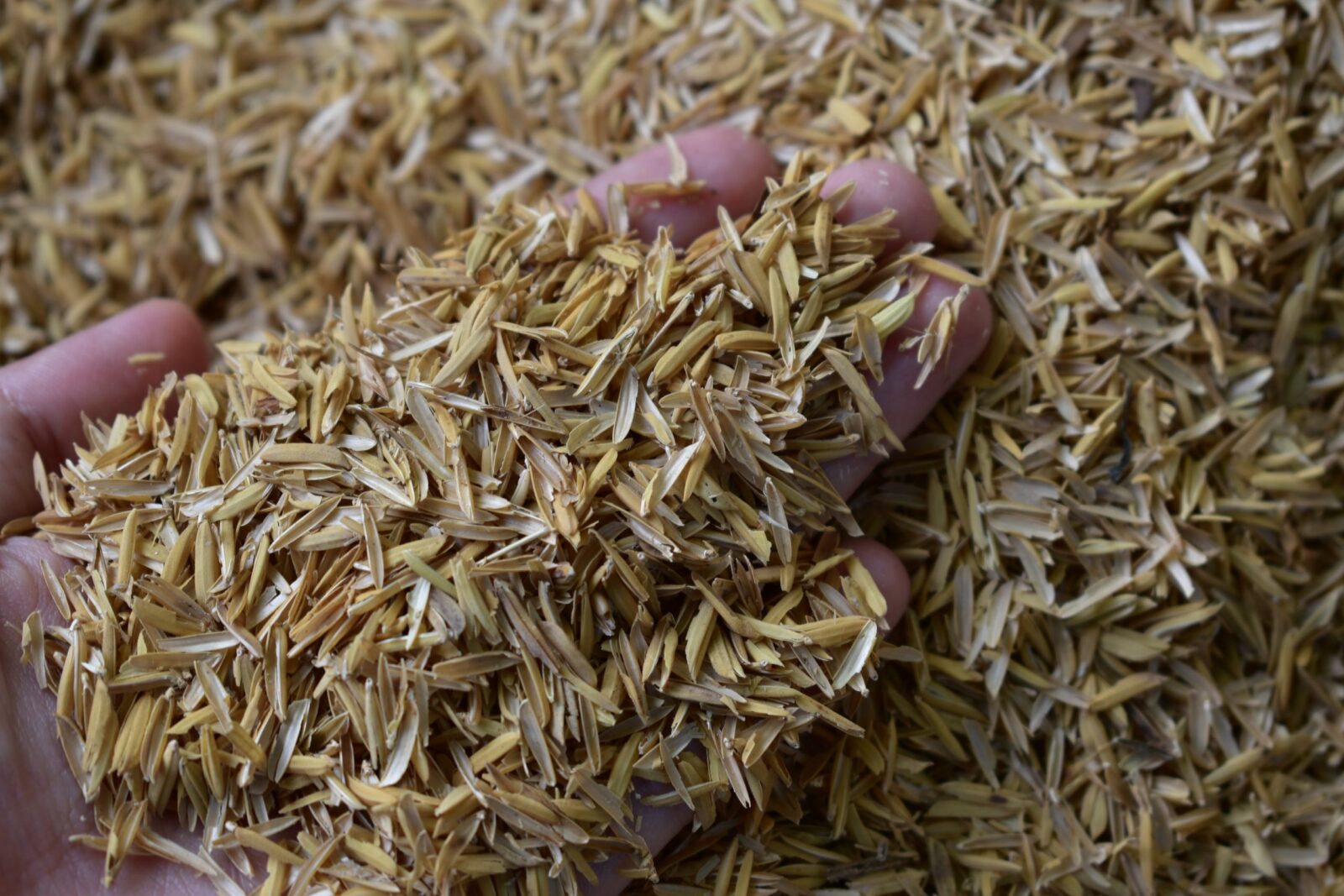Rice hulls
Rice hulls are a proven good litter material. Where they are regionally available, they are the preferred bedding material for many growers.
Characteristics
Lightweight; medium particle size; soft and compressible; low thermal conductivity; low absorbency (with water being held between particles rather than within them); good drying rates; high friability if actively managed.
Contaminants and pests
More likely to attract pests during storage before use than wood-based products (shavings, sawdust) and is more attractive to rodents and wild birds.
There is no evidence that it is more susceptible to litter beetle infestations than other litter bedding material.
Sourcing and pre-treatment
Rice hulls are generally only available within a reasonable transport distance from the rice-growing region of the Riverina. As with straw, there have been issues with a reliable supply at a competitive price in recent years. This is due to severe drought conditions, as there is not only a lack of overall supply, but growers face increased competition from other livestock production (pigs and horse stables).
Ventilation and moisture management
Rice hulls do not generally require any additional ventilation management due to their large surface area, which promotes rapid drying. The lower absorbency of rice hulls means that moisture content can fluctuate more rapidly than with other bedding materials. This means that growers should be prepared to change ventilation, for example by increasing heating and air speed, to increase evaporation rate if the litter starts to appear damp.
Caking and tilling
As with all bedding materials, it can be susceptible to caking if not managed correctly and/or becomes too wet from chicken excreta, outside moisture or extraneous water from broken or poorly maintained infrastructure. Preventing caking may require more regular tilling than wood-based products, but rice hulls are generally considered to be less susceptible to caking than straw.
Litter re-use
Re-use with rice hulls has not been common in Australia, as most re-use has occurred outside of rice-growing areas. It has, however, been successfully re-used overseas.
Spent litter management
Useful as a fertiliser under Australian conditions but will likely have more weed seed contamination than wood-based (shavings, sawdust) products. This can be overcome with effective composting before application.
Rice hulls are more desirable for use in energy generation using anaerobic digestion than timber-based litter, as they will more readily digest than timber. The manure and rice hull component will also generate energy in combustion processes, provided moisture levels are low.
Downloads and resources
Best practice litter management manual for Australian chicken meat farms (PDF, 3MB) | online version
Review of fresh litter supply, management and spent litter utilisation (PDF, 3.5MB)
Litter re-use: an evidence-based guide to re-using litter (PDF, 1.3MB)


